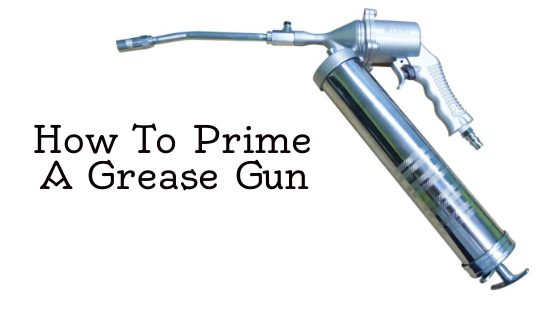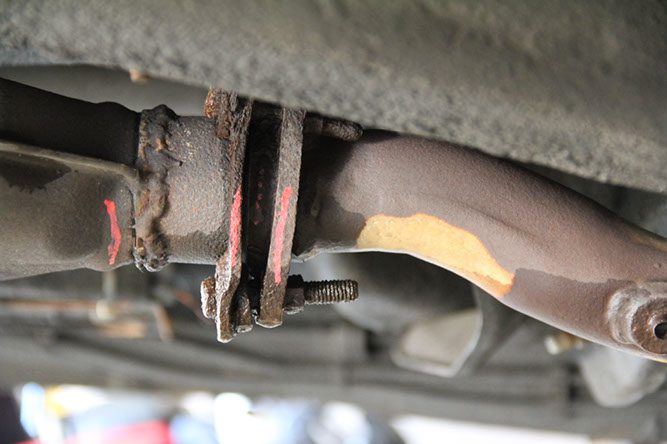How To Prime A Grease Gun| 5 Damn Accurate Steps
In a typical workshop, the grease gun is used to apply. But how to prime a grease gun to distribute the grease to the moving parts of the objects? The gun holds the grease and then discharges it to the targeted parts. For this role to be achieved well, the grease has to be smooth-flowing.
Unfortunately, this might never be the case. It is not uncommon in fact for the grease to harden and clog within the delivery chambers. That calls for it to be primed. But just what is priming? What are its benefits? And what steps may be taken to accomplish it? Read on to find out…
What is grease gun priming?
Priming is the process of making the grease to be smooth, fluid, and less likely to stick to the interior delivery chambers of the guns. It is a critical step to follow to see to it that the grease distributes itself smoothly across a targeted surface to ensure the proper functioning of the part thereof.
Why it is needed?
Priming is needed for the following purposes:
Distribute grease uniformly
Priming ensures that the grease is distributed uniformly across the targeted surface. That of course leads to smoother and more consistent lubrication. The end result of this arrangement is equally unparalleled movements of the parts that are targeted. If this is not achieved, some parts might rotate faster or out of place.
Ensure smooth and consistent distribution
When lubricating the moving parts, there is usually the need to have the grease released in a smooth and consistent manner. How possible is this possible save for the grease itself to be smoother and more consistent in character? The process of priming yet again enables you to achieve this end.
Prevent premature damages
If the moving parts are not properly lubricated, they tend to sustain damages prematurely. The issue may only be prevented if the grease in use is properly primed. Priming sees to it that the grease penetrates the deepest cracks and crevices to yield forth maximum impacts.
How To Prime a Grease Gun- Step by Step Process
Tools required
Garner these items:
- Grease gun
- Screwdrivers
Now follow the steps outlined below:
Step I: Load the gun with grease
Start by loading the gun with grease. These steps will help you achieve the end:
- Jut out the gun’s T-handle and the rod from the grease gun
- Squeeze in the handle gently to have it locked in the open position
- Stash your hands in the small groove to maintain open as you load the grease into the gun
Step II: Remove the empty grease cartridge
You now have to remove the empty grease cartridge. To do this, unscrew the metal cylinder inside the gun. Use the screwdrivers to do this job. Then, pull out the empty cartridge gently.
Step III: Stash in the new grease tube
At this stage, you have to stash in the new grease tube. Follow these steps to have your way in this:
- Pull out the plastic or rubber cap from the end of the grease tube
- Eject the metal tab from the extreme end
- Stash in the new grease tube inside the metallic cylinder
- Orient it such that the metal tab faces downwards relative to the dispensing nozzle
- Screw the cylinder firmly in place to the grease gun
Step IV: Prime the grease
You have now come to the core of the exercise. This is the stage where you prime grease. So that you may achieve this feat, you have to follow these steps:
- Unlock the T-handle and the rod
- Push it in and out of the new grease tube twice or thrice
- This generates a channel to push out the air at the back of the tune to let the grease flow
Step V: Push out the grease
Push out the grease now to make the texture and viscosity to be smoother and more consistent. Squeeze the handle a couple of times until such a time that the grease begins flowing consistently via the dispensing nozzle. While at this, place the gun over a trash can to prevent spilling the grease on the floor or work area.
Frequently Asked Questions (FAQs)
Let us now ask and answer some of the questions about this matter.
Q1.
What are the success indicators?
How much muscle power do I need to get the job done?
How often should I prime the grease?
Conclusion
…and the process of priming your grease gun is as simple as such. This is not something you will struggle to do, neither do you have to gain excess expertise to have the job done. All you have to do is to read through the steps above and internalize them.
It also helps for you to carry out mock priming so that you may be more familiar with the steps altogether. Are you satisfied with our explanations? Could it be that you require further guidance? Let us hear from you as we really value the feedback of the readers of our posts.


